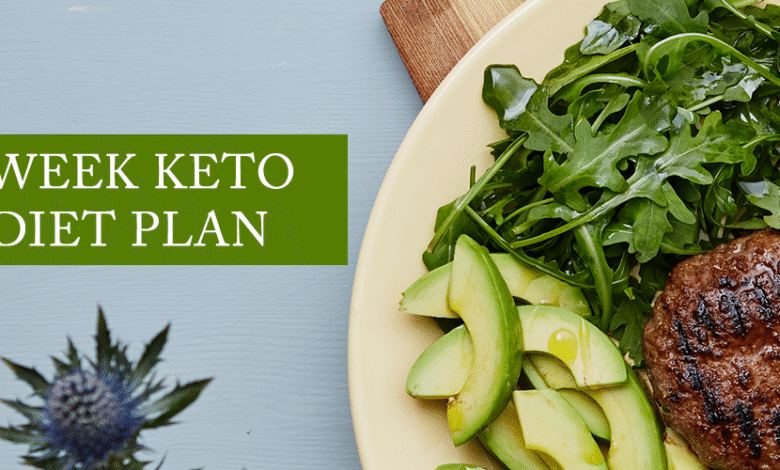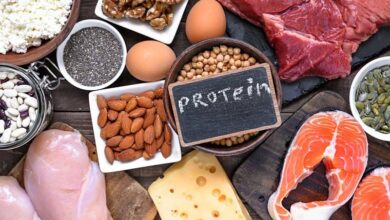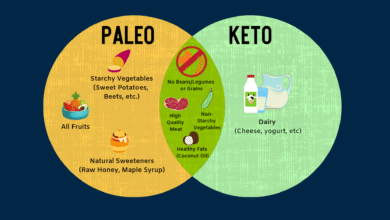
If you’ve ever felt overwhelmed by all the noise around ketogenic diets—endless meal rules, macros, and conflicting advice—you’re not alone. The good news? You don’t need to overcomplicate it. In this guide, I’ll walk you through 5 simple keto diet plans for weight loss that are designed to promote weight loss success without burning you out. You’ll get a model you can follow, real examples, and tips on staying consistent—all in everyday language.
Whether you’re in the U.S., Europe, or Africa, these plans adapt to local foods and tastes. Imagine a roadmap that feels doable—not extreme, not rigid—while still packing enough structure to move you toward your goals. Let’s dive in.
Read Also How to Start Keto Diet: A Beginner’s Weight Loss Blueprint with Proven Results
What Exactly Is a Keto Diet? A Quick Refresher
Before we look at plans, let’s make sure we’re on the same page. A ketogenic diet (or keto for short) is a low-carb, high-fat nutrition approach that encourages your body to burn fat for fuel instead of glucose. You reduce carbohydrates, moderate protein, and increase healthy fats.
When done right, your body enters a state called ketosis, where it produces ketones from fat to fuel your brain, muscles, and organs. This shift often triggers fat loss, better blood sugar control, and more stable energy levels.
Here’s a breakdown of typical macronutrient ratios in a standard keto plan:
- Carbohydrates: ~5–10% of daily calories
- Protein: ~20–25%
- Fat: ~65–75%
Of course, those are just rough guidelines. Each of the 5 simple plans we’ll explore tweaks those ratios a bit—so you can find one that matches your preferences, activity level, and lifestyle.
Why Simpler Keto Plans Are Often Better
You might be tempted to chase fancy, ultra-strict keto formulas or exotic supplements. But here’s the thing: simple keto plans outperform complex ones, especially when it comes to consistency.
Imagine driving cross-country: you want clear directions, not endless detours. You want a map, not a hundred minor side excursions. The same logic applies to dieting. When a plan is simple:
- You’re more likely to stick with it.
- You avoid confusion over minor tweaks and “rule exceptions.”
- You can adjust it to your local foods, budget, and taste.
- You reduce decision fatigue, which often causes people to slip up.
So rather than chasing perfection, we’ll aim for practical consistency. These five plans give you structure, but with wiggle room for your schedule and preferences.
Plan 1: Standard Keto — The Proven Baseline
What Is Standard Keto?
Standard Keto is the classic, go-to version of the ketogenic diet. In this plan, you keep carbs very low, eat moderate protein, and make fat your primary energy source.
Macronutrient Breakdown
- Carbs: 5–7%
- Protein: 20–25%
- Fat: 70–75%
For someone eating 2,000 calories per day, that might translate to roughly:
- ~25–40g net carbs
- ~100–125g protein
- Remaining calories from healthy fats
Typical Foods and Meals
- Breakfast: Eggs cooked in butter or olive oil, with spinach and slices of avocado
- Lunch: Grilled chicken salad with full-fat dressing and olives
- Dinner: Salmon with asparagus, cooked in coconut oil or ghee
- Snacks: Nuts (macadamia, pecan), cheese, bone broth
It’s simple, flexible, and adaptable to many cuisines. In Ghana or Nigeria, you might substitute locally available greens, lean meats, or coconut products without breaking the mold.
Why It Works
This plan uses time-tested macronutrient proportions shown in many studies to produce ketosis, fat loss, and improved metabolic markers. Because it’s straightforward, it’s easier to follow consistently over weeks and months.
Plan 2: Moderate-Carb Keto — For Those Who Love Veggies or Fruits
What Is Moderate-Carb Keto?
If you find strict keto too rigid—or you love veggies and berries—Moderate-Carb Keto gives you a little more elbow room. It’s ideal for people who want to maintain keto’s benefits but still enjoy more non-starchy vegetables or occasional berries.
Macronutrient Breakdown
- Carbs: 10–12%
- Protein: 20–25%
- Fat: 65–70%
With 2,000 calories, that might allow ~45–60g net carbs per day. Enough for more leafy greens, some berries, or small stashes of legumes (if you tolerate them).
Food Examples
- Breakfast: Omelet with mushrooms, bell pepper, and a bit of goat cheese
- Lunch: Tuna salad with mixed greens, a handful of berries, and olive oil
- Dinner: Lamb chops with zucchini noodles and a side of sautéed kale
- Snacks: Celery and almond butter, berries with heavy cream
Why It Might Suit You Better
- You get more variety and micronutrients from veggies and berries.
- It might feel more sustainable long-term, especially if you’re transitioning from a higher-carb diet.
- It may be gentler on digestion and energy levels for some people.
Just be cautious—if you push those carbs too high, you’ll slip out of ketosis. Monitor your body, energy, and results.
Plan 3: Cyclical Keto — For Active People
What Is Cyclical Keto?
Cyclical Keto, or “Carb Cycling Keto,” alternates periods of strict keto with periods of higher carb intake. This approach is often used by athletes, people who train strongly, or those who want periodic carb “refeeds.”
Structure and Ratio Mix
A common pattern: 5 days of standard keto, 2 days of higher carb (often on weekends or based on workout schedule). During high-carb days:
- Carbs may rise to 100–150g on refeed days
- Protein and fat are adjusted accordingly
Why Use This Plan?
- Supports high-intensity performance and muscle recovery
- Mentally easier: knowing you have planned “cheat days”
- Can prevent metabolic slowdown from prolonged extreme dieting
How to Execute It
- On keto days: standard keto macro ratios
- Refeed days: focus on high-quality carbs—sweet potatoes, plantains, fruits
- Keep protein adequate during both phases
- Ensure total calories don’t overshoot too much
Tips & Cautions
- Don’t use refeed days as binge days—be strategic
- Keep carb sources nutrient-dense
- Monitor how your body reacts—some people slip out of ketosis too easily or feel sluggish
Plan 4: Lazy Keto — For Flexibility Lovers
What Is Lazy Keto?
If macro tracking feels overwhelming, Lazy Keto lets you focus on carb limits only—ignoring precise tracking of fat and protein (within reason). You simply aim to keep net carbs under a target (say, 20–30g).
Why “Lazy” Might Be Smarter
- Minimal math: you don’t need to count every gram of fat or every calorie
- Lower stress and better adherence
- Useful for people who just want “low carb, high fat” without obsessing
How It Works in Practice
- You choose foods ahead of time that tend to be keto friendly
- You check labels (if packaged foods) to confirm carb totals
- You adjust portions by feel, focusing on satiety and comfort
Sample Meals
- Breakfast: Bulletproof coffee, or coffee with heavy cream + eggs
- Lunch: Sardines and avocado salad
- Dinner: Steak with broccoli, cooked in butter
- Snacks: Keto bars (low-carb certified), cheese sticks
Potential Trade-Offs
- You might eat too much protein or fat, since you’re not tracking
- You may miss small adjustments that could push you out of ketosis
- It’s best for those who have already tried strict keto and know their limits
Plan 5: Targeted Keto — For Pre/Post Workout Fuel
What Is Targeted Keto?
Targeted Keto (TKD) allows you to consume a small amount of fast-digesting carbs around workouts. The idea: fuel your exercise without disrupting your overall ketosis state too much.
Macro Adjustment Approach
- Baseline diet: follow standard keto macros
- Around workouts: add ~20–30g of carbs (glucose, dextrose, or simple fruit) about 30–60 minutes before or after
Who It’s For
- People doing high-intensity training (HIIT, CrossFit, sprinting)
- People who hit performance plateaus with strict keto
- Those who want a balance between fat adaptation and workout support
How to Deploy It
- Consume carbs only in your “window” (before/after workout)
- Keep total daily carbs modest so you remain mostly in ketosis
- Monitor how your body responds—some may exit ketosis too easily
Food Examples
- Pre-workout: small portion of dextrose or banana
- Workout
- Post-workout: shake with whey + minimal carbs
- Rest of day: standard keto meals
This targeted approach gives you the energy boost you need while preserving many of keto’s metabolic benefits.
Comparing the 5 Plans at a Glance
| Plan Name | Carb Limit / Strategy | Best For | Trade-Offs |
|---|---|---|---|
| Standard Keto | ~5–7% carbs | Beginners, general weight loss | Rigidity, adaptation period |
| Moderate-Carb Keto | ~10–12% carbs | More variety lovers | Risk of exiting ketosis |
| Cyclical Keto | Carb refeed days 100–150g | Active people, athletes | Requires planning and discipline |
| Lazy Keto | Only limit carb count, no macro tracking | Flexible, low-maintenance followers | Possible over-consumption |
| Targeted Keto | Small carbs around workouts | Strength trainers, fitness buffs | Careful timing needed |
Each of these plans has a unique flavor. Some are stricter; others allow more flexibility. My goal is to help you pick a plan that fits you, not force you into one template.
How to Choose the Right Keto Plan for You
1. Consider Your Activity Level
If you’re mostly sedentary, standard, moderate, or lazy keto may work well. But if you train hard or do intense cardio, targeted or cyclical keto may help you perform better without losing progress.
2. Think About Your Personality
- Do you love structure and tracking? Go for standard or cyclical.
- Do you hate counting and measuring? Lazy keto might be your friend.
- Do you want more food variety and enjoyment? Moderate keto offers flexibility.
3. Monitor Your Progress and Energy
Track weight changes, energy, mood, and how your clothes fit. Use ketone strips or a meter if you want precision. Be willing to adjust.
4. Consider Long-Term Sustainability
The best plan isn’t the strictest—it’s the one you can maintain for months or years. If a plan feels torturous, you’ll quit. Simpler is better long-term.
Step-by-Step Setup: 7-Day Template for Each Plan
To help you visualize how these plans work in real life, here’s a basic 7-day template for each. (Feel free to swap meals or ingredients based on your locale.)
Standard Keto Example (7-Day Template)
| Day | Breakfast | Lunch | Dinner | Snack |
|---|---|---|---|---|
| 1 | Scrambled eggs + spinach + butter | Grilled chicken + spinach + olive oil | Salmon + broccoli in coconut oil | Macadamia nuts |
| 2 | Omelet with cheese & mushrooms | Tuna salad with greens & avocado | Pork chops + cauliflower mash | Cheese cubes |
| 3 | Bulletproof coffee + boiled eggs | Beef stir-fry (low-carb veggies) | Lamb chops + zucchini | Handful of pecans |
| 4 | Avocado + bacon + eggs | Shrimp salad | Chicken thighs + asparagus | Greek yogurt (full-fat) |
| 5 | Chia pudding (unsweetened almond milk) | Sardines + greens | Steak + sautéed spinach | Olives & cheese |
| 6 | Cottage cheese + berries (low-carb) | Turkey lettuce wraps | Cod + Brussels sprouts | Almond butter on celery |
| 7 | Keto pancakes (almond flour-based) | Salmon salad | Roast beef + green beans | Hard-boiled eggs |
Tips to Boost Weight Loss in All Plans
Drink Enough Water
Keto increases water loss. Dehydration slows metabolism and causes fatigue. Aim for at least 2–3 liters a day (or more if active).
Prioritize Electrolytes
You lose sodium, potassium, magnesium early on. Use salt, spinach, nuts, avocados, or supplements (if needed).
Get Adequate Sleep
Poor sleep throws your hunger hormones off. Aim for 7–9 hours per night.
Include Strength Training
Muscle burns more calories at rest. Pair keto with resistance training for better body composition.
Track Progress, Not Just Scale Weight
Use photos, waist measurements, energy levels, how your clothes fit. Sometimes water and inflammation cause scale fluctuations.
Be Patient Through the Adaptation Phase
Some people feel “keto flu” (headache, lethargy) for a few days. That’s typical. Once your body adapts, the benefits often follow.
Rotate Foods & Prioritize Whole Foods
Variety prevents nutrient gaps. Choose meats, fish, eggs, non-starchy vegetables, nuts, seeds, healthy oils.
Common Mistakes & How to Avoid Them
1. Eating Too Much Protein
Overdoing protein can convert excess into glucose (gluconeogenesis), kicking you out of ketosis. Aim to keep protein moderate, not excessive.
2. Hidden Carbs Sneaking In
Sauces, dressings, processed foods may carry sugars. Always read labels. Don’t assume “keto-friendly” labels are perfect.
3. Ignoring Fiber & Micronutrients
Low-carb doesn’t mean zero veggies. Greens, spinach, cruciferous veggies help your digestion and nutrient intake.
4. Excessively Restricting Calories
Going too low in calories can stall your metabolism and cause muscle loss. Aim for a modest deficit, not starvation.
5. Abandoning Plan Too Early
Results often take 3–6 weeks. If you quit at 2 weeks because “nothing changed,” you might miss the momentum. Give it time.
How to Transition Between Plans
Sometimes life changes—your workouts intensify, your stress levels shift, or your preferences evolve. Here’s how to migrate cleanly between these plans:
- From Standard → Moderate: Slightly increase carb allowance (e.g. +10–20g), monitor your blood sugar and ketosis markers for a week.
- From Moderate → Standard: Reduce your carb intake gradually, replace with healthy fats.
- To Cyclical or Targeted: Introduce carb refeeds or workout carbs in controlled windows; don’t jump all in at once.
- To Lazy Keto: Stop tracking fat and protein precisely; just maintain your carb limit and monitor results.
- From Lazy → Standard: Begin reintroducing macro tracking gradually—maybe one meal per day at first.
The transition should feel smooth rather than jarring. Always test how your body responds.
Real-Life Examples & Case Studies
Case Study 1: “Ama in Ghana”
Ama, 35, from Accra, wanted to lose 15 kg. She started with Standard Keto, using local ingredients—eggs, fish, palm oil (in moderation), spinach, avocados, and nuts. After 12 weeks, she lost about 8 kg, reported better energy, and decreased cravings. She then switched to Moderate Keto to reintroduce more vegetables and enjoyed more variety without backsliding.
Case Study 2: “John in New York”
John, 42, worked out intensely. He opted for Cyclical Keto: 5 keto days, then two days of carbohydrates on heavy training days. This method kept up his gym performance and allowed occasional treats. Over 6 months, he lost body fat but maintained strength.
Case Study 3: “Elena in Spain”
Elena hated tracking. She adopted Lazy Keto, simply keeping carbs under 25 g daily. She managed to lose weight gradually and found it easier emotionally to follow. When she plateaued, she switched to Targeted Keto to add workout carbs and saw renewed progress.
These examples show that the “best” plan is the one that fits your life, preferences, and body.
How to Deal with Plateaus or Resistance
You may hit a plateau where weight loss stutters. Don’t panic—it’s common. Try these strategies:
- Reassess calorie intake — If you’re under-eating, your metabolism may slow. Or you might be eating more than you realize (hidden fats count).
- Include intermittent fasting — Skipping a meal or doing a 16:8 window can create a fresh stimulus.
- Vary your macros briefly — Try a 1–2 day carb refeed or adjust your protein/fat ratio.
- Cycle your carbs — If you’re on Standard or Lazy Keto, trial a temporary shift to Targeted or Cyclical to shock your system.
- Add more movement — Walk more, add HIIT or strength sessions.
- Sleep, stress, recovery — Sometimes the culprit is high cortisol from stress or lack of rest.
Tracking your food, sleep, mood, and energy helps you identify what needs tweaking.
Tips for Keto Success in Africa, U.S., and Europe
Adapt to Local Foods
- Africa: Lean meats, fish, green leafy vegetables, coconut, groundnuts, avocado, eggs—all often available locally.
- U.S.: Grass-fed meat, wild-caught fish, dairy, avocados, nuts, quality oils.
- Europe: Olive oil, cheeses, local fish and meats, greens, nuts.
Use what’s affordable and accessible in your region. Keto success often lies in practical substitutions—not chasing exotic imported “superfoods.”
Budget-Friendly Keto Tips
- Buy whole chickens, bulk eggs, canned fish
- Use seasonal vegetables and frozen greens
- Use local fats (coconut oil, palm kernel oil in moderation, olive oil)
- Shop farmer markets, local butchers
Cultural & Social Adaptations
- Weddings, celebrations, shared meals—carry a keto-friendly dish to share
- Explain your choice kindly; many people will accept grilled meat, veggies
- Choose low-carb options in restaurants—salads, grilled proteins, olive oil
Coping With Carb Cravings
- Drink herbal teas, have keto fat bombs
- Keep nuts, cheese, olives handy
- Distract yourself with walking, a hobby, or a chat
Monitoring Progress: Tools & Metrics
1. Scale Weight & Body Measurements
Weigh yourself weekly under consistent conditions. Use a tape to track waist, hips, and thighs.
2. Body Fat & Composition Tools
Skinfold calipers, bioelectrical impedance scales, or DEXA scans (if available) help track lean mass vs fat.
3. Ketone Testing
Use ketone strips, breath analyzers, or blood ketone meters to check whether you’re in ketosis. This can help you fine-tune your plan.
4. Energy, Mood & Sleep Logs
Record how you feel—if energy dips, sleep is poor, or mood declines, that’s a signal to adjust.
5. Progress Photos
Take front, side, and back photos every 2–4 weeks in the same clothes, light, and pose.
Supplement Considerations (Optional & Cautious Use)
Supplements are optional tools—not mandatory. Here are safe ones often used alongside keto:
- Electrolytes (sodium, potassium, magnesium): Helps with balance and reduces “keto flu.”
- Omega-3 fatty acids (fish oil): Supports heart health and inflammation balance.
- MCT oil or powder: A fast form of fat that can help boost ketone levels.
- Vitamin D, B-complex: Especially in regions with less sunlight or poor diet diversity.
- Digestive enzymes / probiotics: If adjusting to higher fat causes indigestion.
Use them carefully and ideally under supervision or after your diet is stable.
Safety Considerations & Contraindications
Keto is generally safe for healthy adults, but some groups should take extra caution or avoid it:
- People with type 1 diabetes, unless under medical supervision
- Those with a history of disordered eating
- Pregnant or breastfeeding women (consult a doctor)
- People with kidney disease, liver disease, or gallbladder issues
- Anyone taking medications that affect blood sugar or insulin (must consult a physician)
Always consult a healthcare professional before starting any restrictive diet, especially if you have chronic illness or take medications.
Common Myths & Misconceptions About Keto
Myth #1: You’ll get constipated forever
Truth: Initially, you may experience changes as fiber intake shifts. But with greens, flaxseed, chia, and hydration, most people maintain good digestion.
Myth #2: Keto is just bacon and butter
Truth: A well-constructed keto diet emphasizes vegetables, micronutrients, healthy fats—not just saturated fat and processed items.
Myth #3: You lose muscle on keto
Truth: If you maintain moderate protein, do strength work, and avoid extreme calorie deficits, you can preserve—and even build—lean mass.
Myth #4: You can’t eat fruit
Truth: You limit high-sugar fruits, but berries in small amounts or targeted refeed days are often acceptable.
Myth #5: Keto damages your heart
Truth: Numerous studies show keto can improve HDL, lower triglycerides, and reduce cardiovascular risk factors—if you choose healthy fats and avoid processed junk.
Putting It All Together: How to Start Right Now
- Choose one of the five plans above that best matches your activity, personality, and goals.
- Draft your first 7-day meal plan, slotting in local foods and swaps.
- Stock your kitchen with eggs, meats/fish, vegetables, healthy fats, nuts, and condiments.
- Hydrate and get electrolytes from day one.
- Begin your plan, allowing your body a 1- to 2-week adaptation period.
- Track progress (weight, energy, mood) and adjust as needed.
- Be kind to yourself. You’ll have ups and downs; the key is persistence.
Conclusion
Choosing a keto plan doesn’t have to feel like solving a complex puzzle. These 5 simple keto plans—Standard, Moderate, Cyclical, Lazy, and Targeted—offer flexibility, clarity, and paths to long-term weight loss success. The “best” one isn’t the strictest—it’s the one you can live with consistently. Combine smart food choices with hydration, sleep, and strength training, and you’ll give yourself the best shot at sustainable results.
Read Also “Keto Meal Plans for Rapid Weight Loss: 5 Simple Strategies”
FAQs
1. How long should I stay on a keto plan?
You can follow a well-structured keto plan for several months to a year or more. Many people use keto until they reach their goal weight, then transition to a more moderate low-carb or balanced diet for maintenance.
2. Can I do keto if I’m very active or athletic?
Yes—with Cyclical or Targeted Keto you can incorporate carbs around workouts to fuel performance while still reaping keto benefits.
3. Will I lose muscle on keto?
Not if you consume moderate protein, keep a moderate calorie deficit, and do resistance training. Keto can favor fat loss while preserving lean mass.
4. What if I plateau?
Reassess calorie intake, try intermittent fasting, rotate carb strategy (e.g. add a refeed), boost activity, or adjust macros slightly.
5. Is keto safe long term?
For most healthy adults, yes—especially when nutrient-dense, whole foods are prioritized. But individuals with chronic health conditions, or those using certain medications, should consult a healthcare provider before starting.




One Comment